Concrete paving ideas: 12 sturdy and stylish designs for your yard
These concrete paving ideas will help you create stunning patios and pathways for cheap
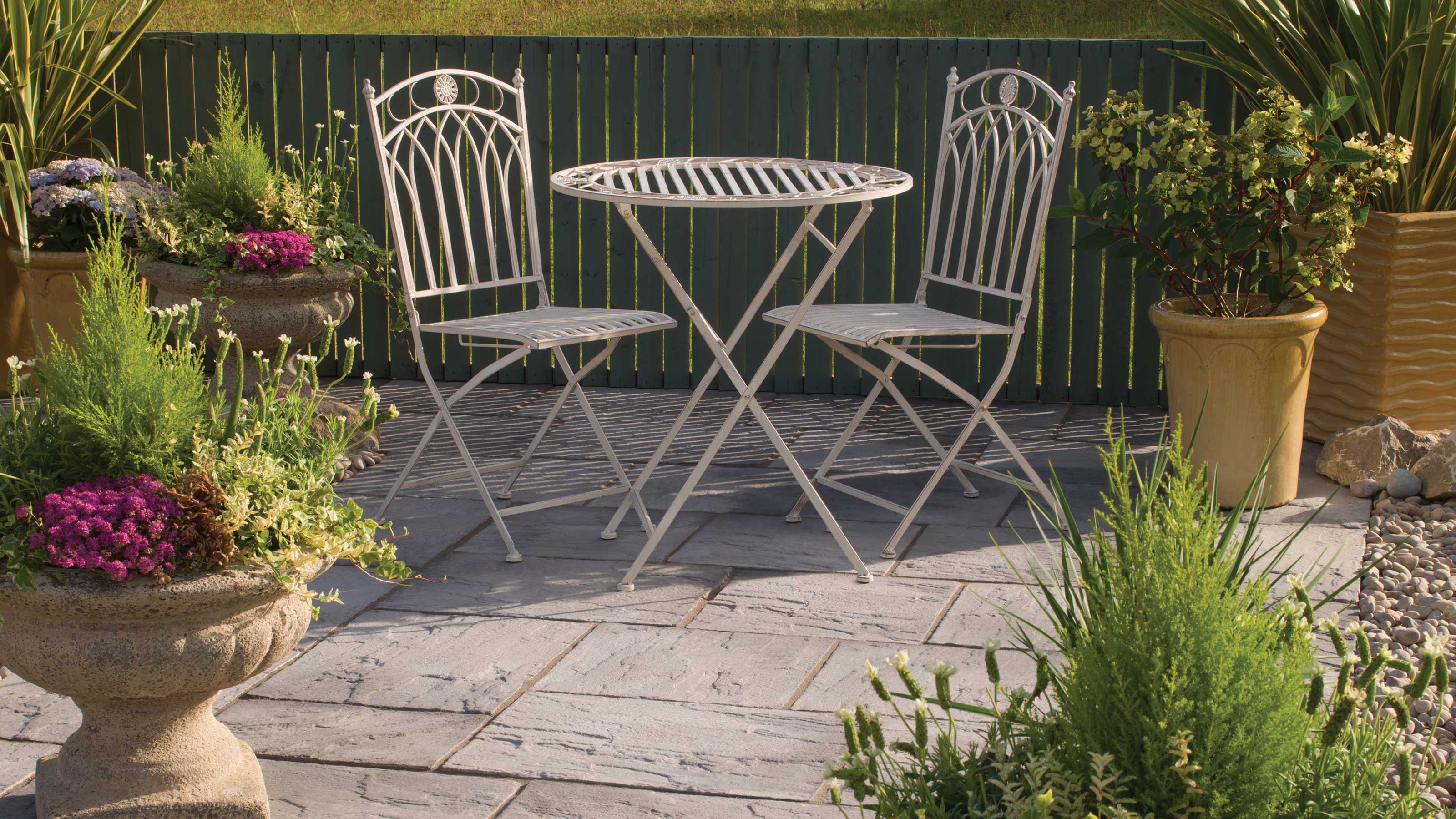

Concrete paving may not seem that exciting when compared to natural stone or other, more glamourous-sounding options on the market. However, there are plenty of reasons to consider this material for a backyard. And, as our roundup of ideas shows, it can look just as chic as its counterparts.
For starters, whether you're looking for patio paving solutions or planning a new path, concrete tends to be cheaper than stone or porcelain slabs, reveals Cass Heaphy of Paving Direct.
But it's not just the affordability that makes this a good landscaping option: it can look great, too. 'Concrete is fast-becoming the go-to material of choice for those seeking to create an intrinsically cool, urban look in their garden,' comments the experts at Bradstone.
What's more, 'Practicality is accounted for with concrete – as well as being super-stylish, concrete is incredibly durable, versatile and long-lasting,' the team continues. 'Concrete pavers can be used in a main patio area and thanks to its hard-wearing nature, is ideal for areas which see large amounts of footfall.'
Boost the practicality of your plot with these concrete paving ideas
To help you get inspired for your own backyard plans, we've rounded up our top concrete paving ideas to show just how versatile this material is.
1. Add concrete stepping stones across a lawn
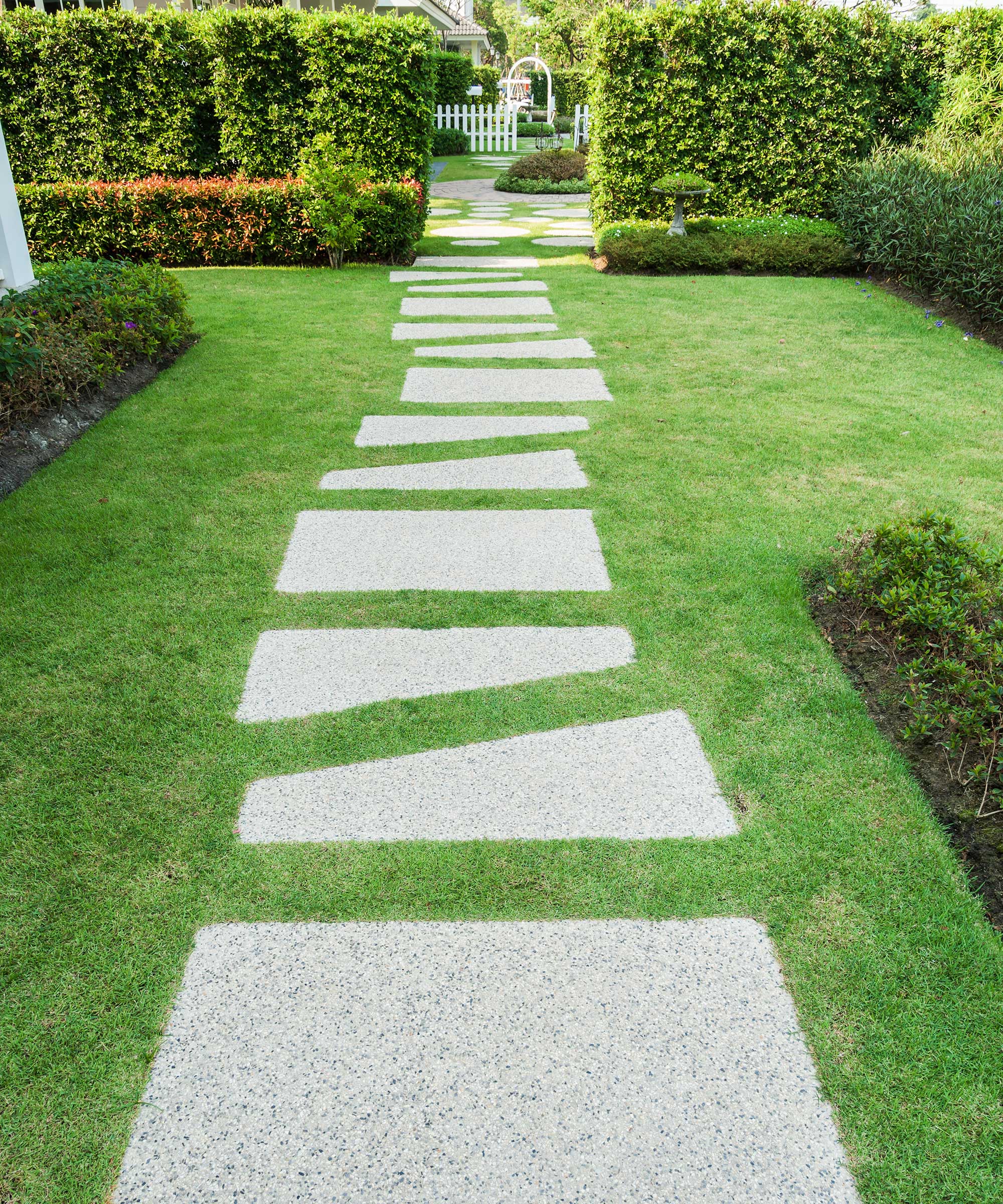
Protect your lawn from excess footfall with a playful pathway
A stepping stone pathway is one of our favorite paving ideas. It's a fun approach while being practical, too – for instance, this design will keep footfall off the lawn, helping to prevent damage when it's wet or frozen.
There are plenty of different shapes and sizes of concrete pavers to choose from to complement the rest of your yard. Here, irregular shapes and a slightly offset layout create a contemporary feature that guides the eye down the length of the garden.
What's more, learning how to lay stepping stones is so simple that in most cases you can skip the costs of hiring a pro.
2. Embrace the industrial look
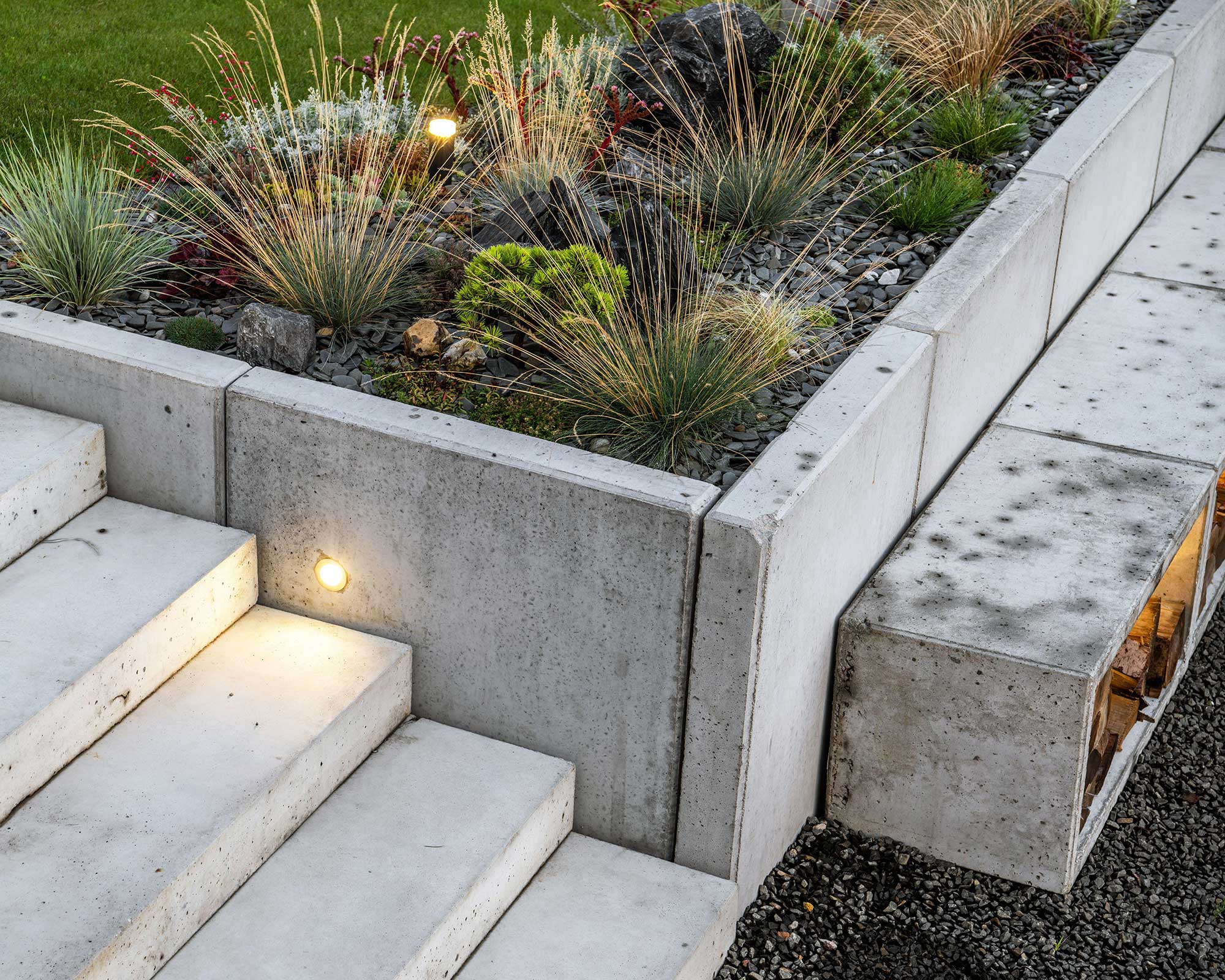
Give your garden a sophisticated, urban look
Concrete is known for its industrial-chic look, so if you're on the hunt for modern paving ideas, it makes a perfect solution.
To keep your outside space feeling harmonious, use concrete for more than one landscaping feature. Here, the paved steps blend cohesively with raised beds, fitted with recessed spotlights to help light the way. Ornamental grasses are a great match to extend the contemporary look and bring a welcome contrast in texture.
Concrete is also used for minimalistic benches which cleverly double up as log storage: for added comfort, simply add outdoor cushions when needed.
3. Use a variety of sizes and styles for your concrete pavers

This outdoor space is full of textural interest
By using different-sized concrete pavers, you can easily create distinct zones in your yard.
Here, jumbo slabs carve out a wide path. This main route is intercepted by a walkway made up of smaller, irregular slabs, which leads the way to a cool seating area. This combination of cheap paving results in a texturally interesting look that's affordable to achieve, and all the lush, tropical planting adds plenty of color to soften the gray tones.
4. Create drama with dark gray slabs
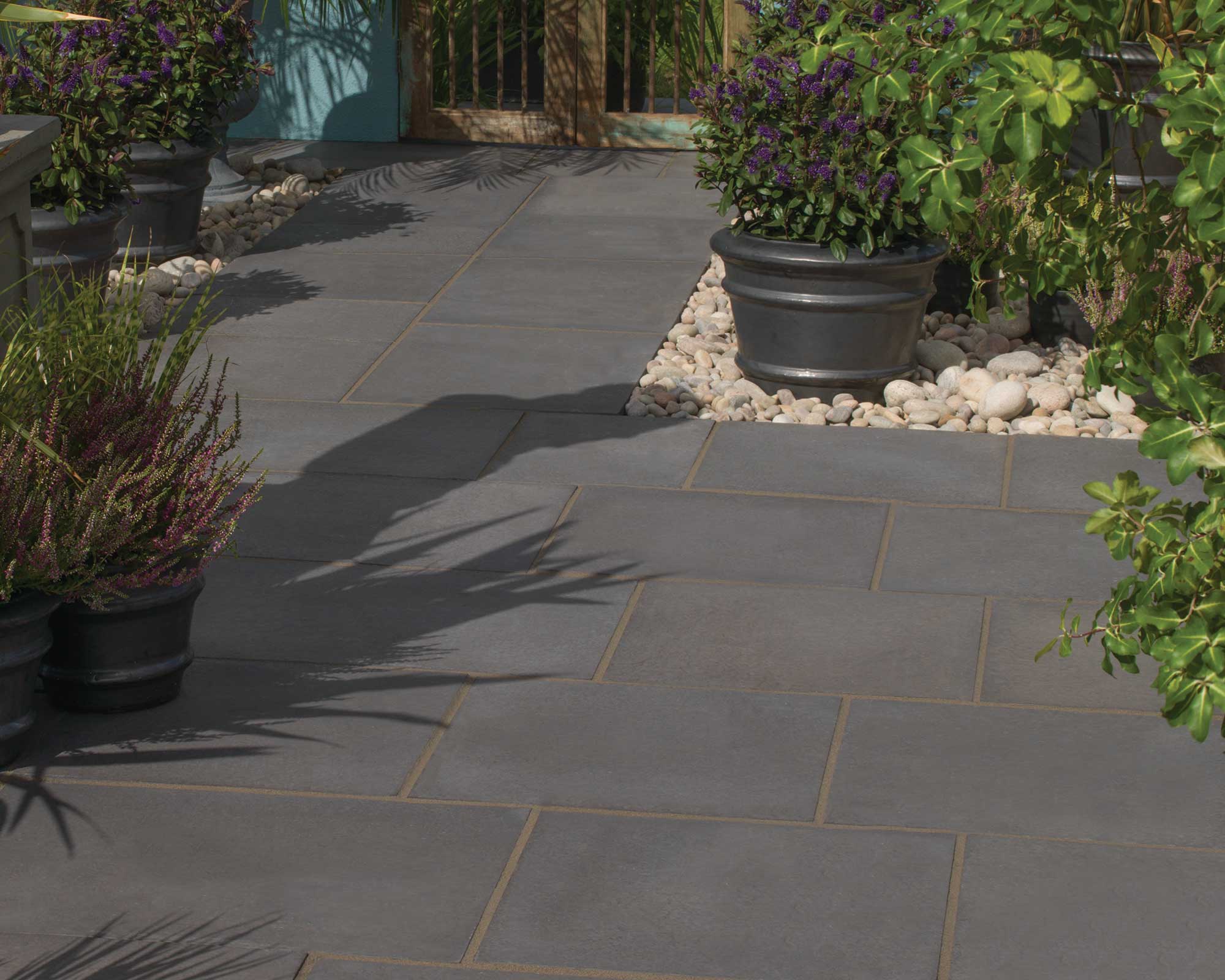
Aged Riven ECO Concrete Paving from Bradstone gives this plot a modern edge
These dark-toned concrete pavers are a surefire way to make a space feel chic – perfect for an urban patio.
By trying out creative paver patterns and choosing a grout in a contrasting color, you can elevate a look in a subtle yet undoubtedly sophisticated way. Take a cue from this setup and pair it with pots in a matching hue – a great way to pull together a space.
We like the use of pale pebbles here, too, for an eye-catching contrast in color and form (plus, they'll help with drainage when it rains).
5. Reduce the risk of flooding with permeable concrete paving
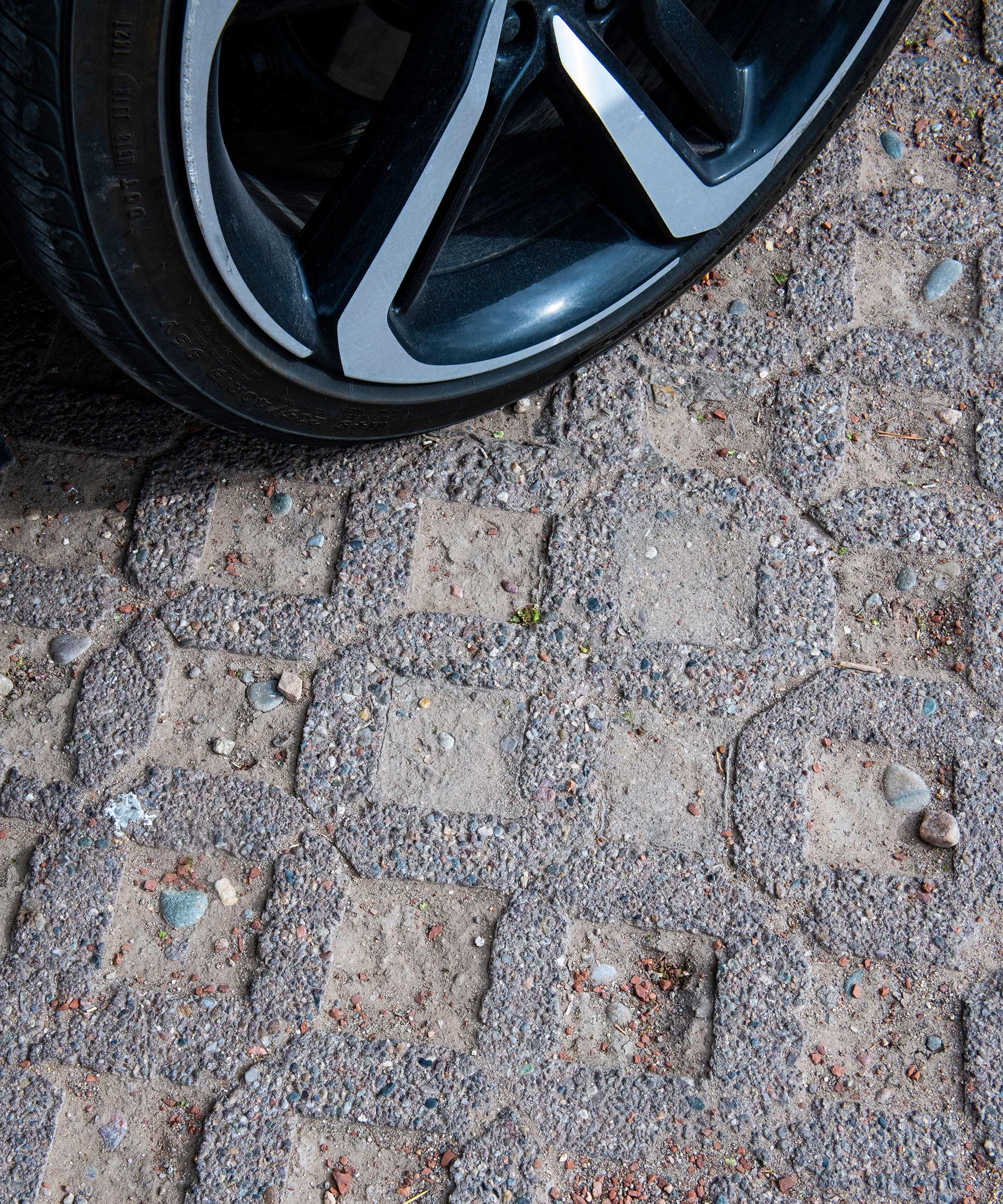
Permeable paving makes a good choice for driveways
Speaking of drainage, it's worth reading up on permeable paving to help protect your home from flood damage. Some types of concrete block paving, as seen above, can be installed to allow rainwater to filter through into the ground.
As this stops water run-off from overwhelming nearby drains, it's also good for the environment. But that's not the only eco paving tip to bear in mind. Some manufacturers have developed concrete paving with sustainability in mind. For instance, Bradstone has an ECO range, which, they explain, 'allows for over 20% reduction in the carbon footprint compared to the standard versions of concrete product, without compromising on durability and style.'
6. Add personality with paint
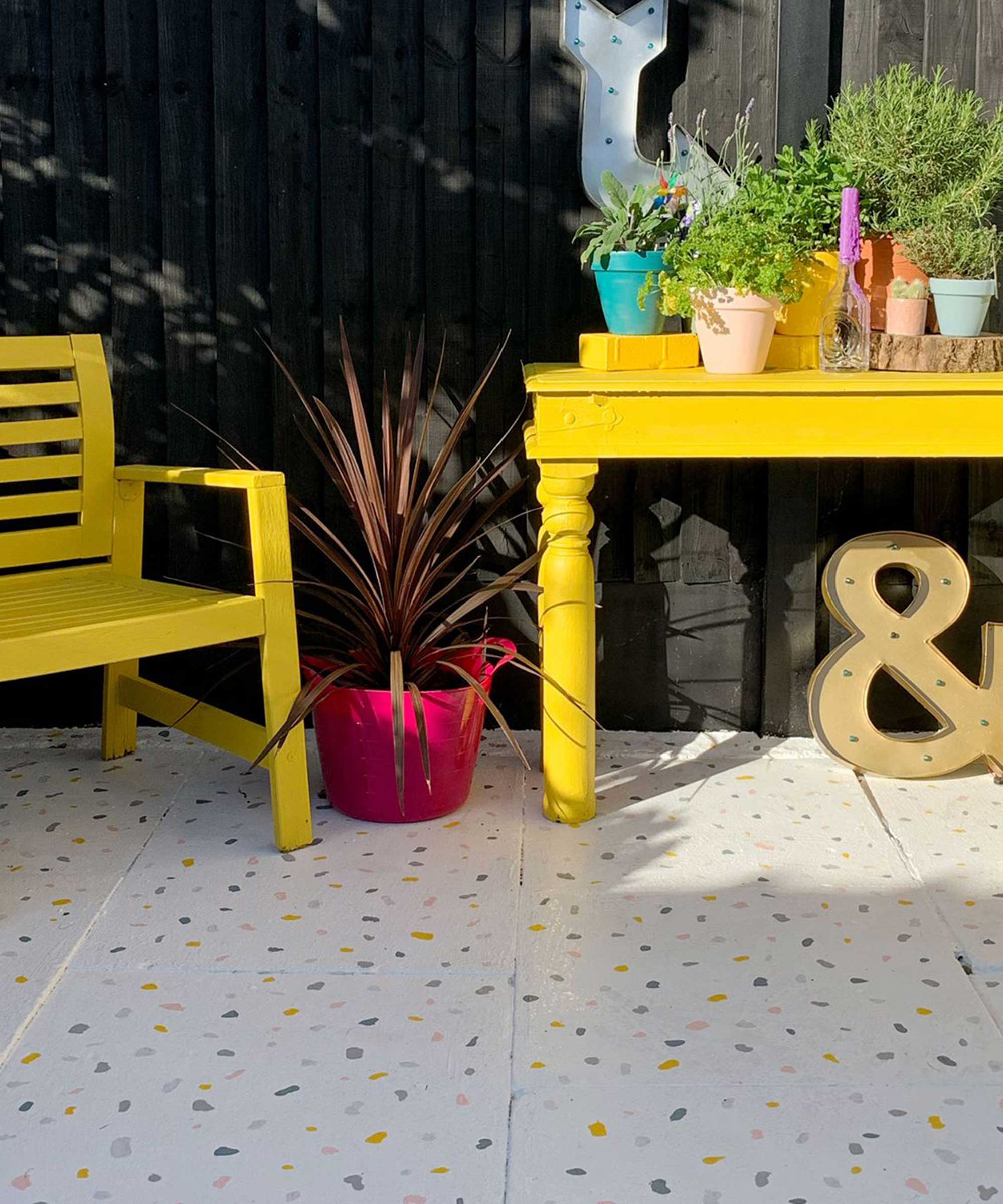
Give your concrete pavers an update
If you've already used concrete pavers in your backyard but they're looking a little lackluster, a cheap and cheerful way to give them an update is to add a lick of paint.
Choose to paint them in block colors, hand-draw a custom design, use a stencil, or recreate a terrazzo effect as seen in this setup above: there are tons of possibilities when it comes to painted patio ideas. Just remember to give them a good clean first, and note that they will need a bit of upkeep to stay looking tip-top.
7. Mix and match tones for a contemporary vibe
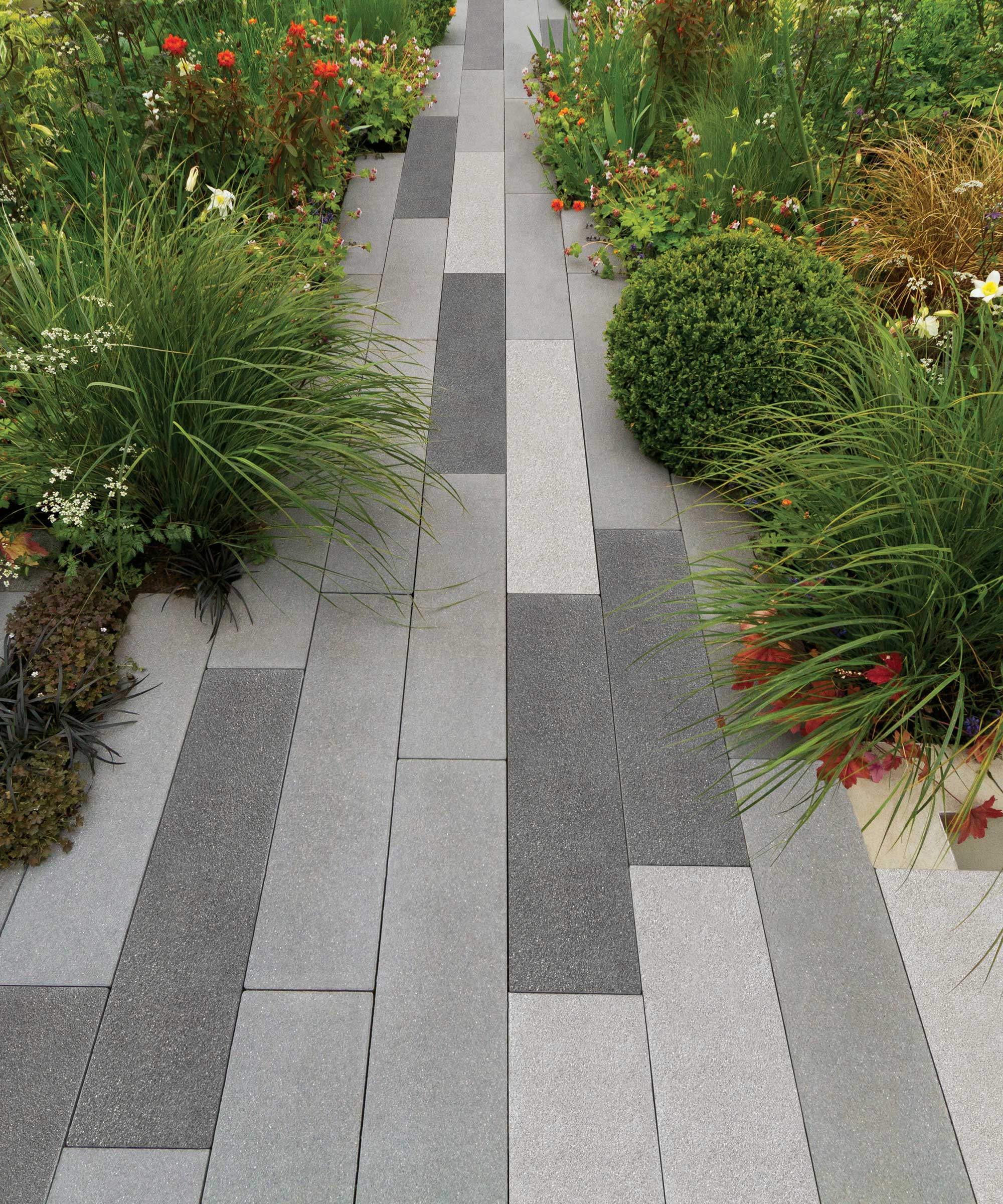
StoneMaster Concrete Paving from Bradstone is made to look like natural granite
This garden path is perfect for a modern plot and goes to show how concrete can be used to create truly show-stopping effects.
The long, slender slabs offer a sense of elegance and can help to elongate the space, while using a mix of three tones in an irregular pattern feels fresh. Look closely and you'll spot how the design lacks a uniform edge – this allows the planting to spill onto the path in an organic and informal way.
Not just for pathways, a design like this work well for a concrete patio, too.
8. Elevate your concrete paving with matching edging
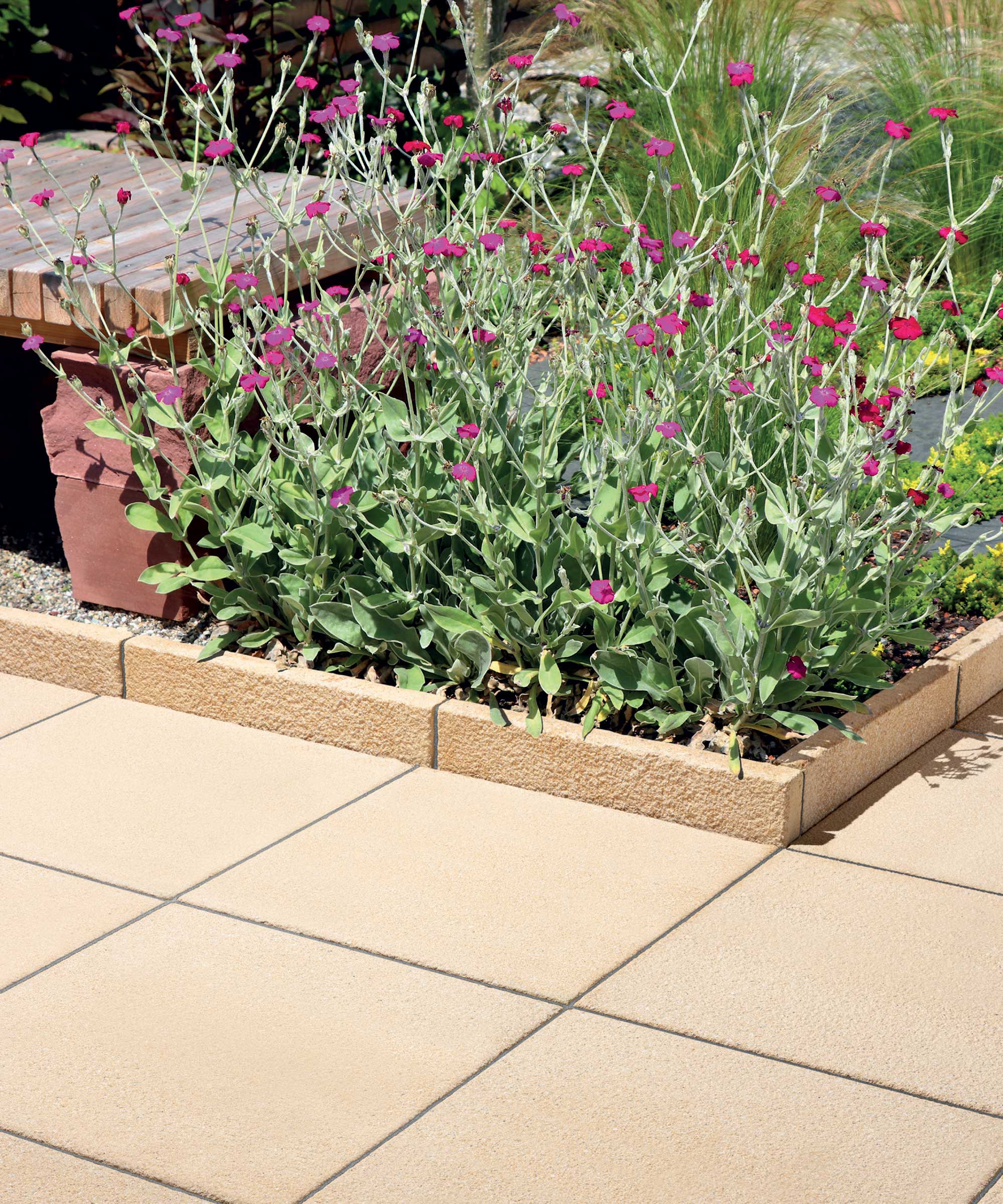
This textured concrete paving from Bradstone incorporates fine white limestone chippings for a softened appearance
Whether for a path or a patio, even the simplest of concrete paving ideas can be instantly elevated with the addition of garden edging. And not only will it up the aesthetics, but it is also practical, as will keep materials such as bark chippings and soil in their proper place.
Choose a matching design for a smart and seamless scheme. This soft-buff-toned, straight-edged example complements the paving beautifully.
9. Add rustic charm with textured pavers
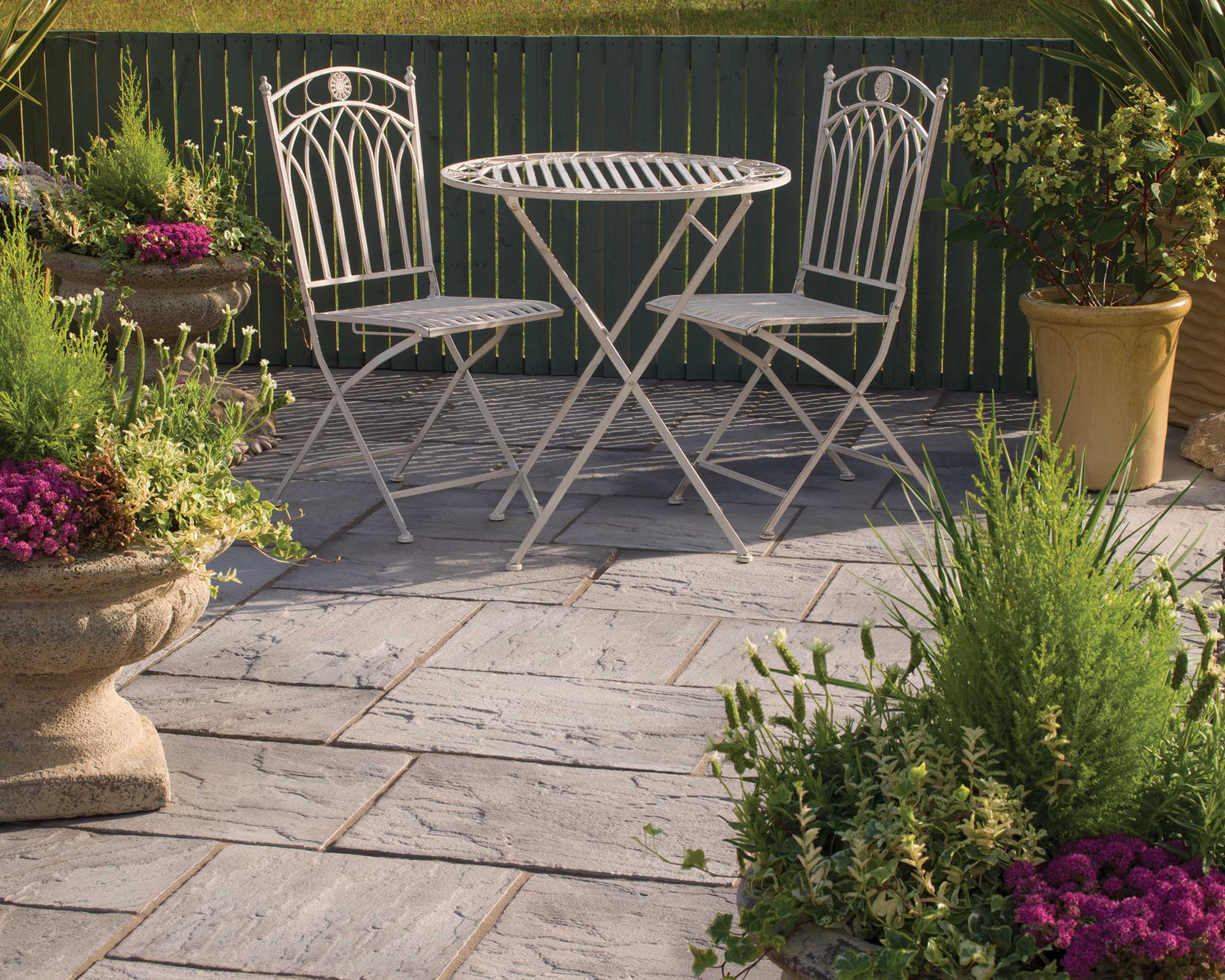
Ashbourne ECO Concrete Paving from Bradstone adds rustic appeal to this space
'Concrete paving comes in a large variety of colors and styles to meet both modern properties and more rural locations – from smooth edges and clean lines creating a sleek, contemporary look, to a more traditional, timeworn appearance,' says the team at Bradstone.
With their fettled edges and riven surface, these slabs have all the appeal of worn natural stone and would suit a cottage garden well.
10. Soften a concrete courtyard with homely accessories
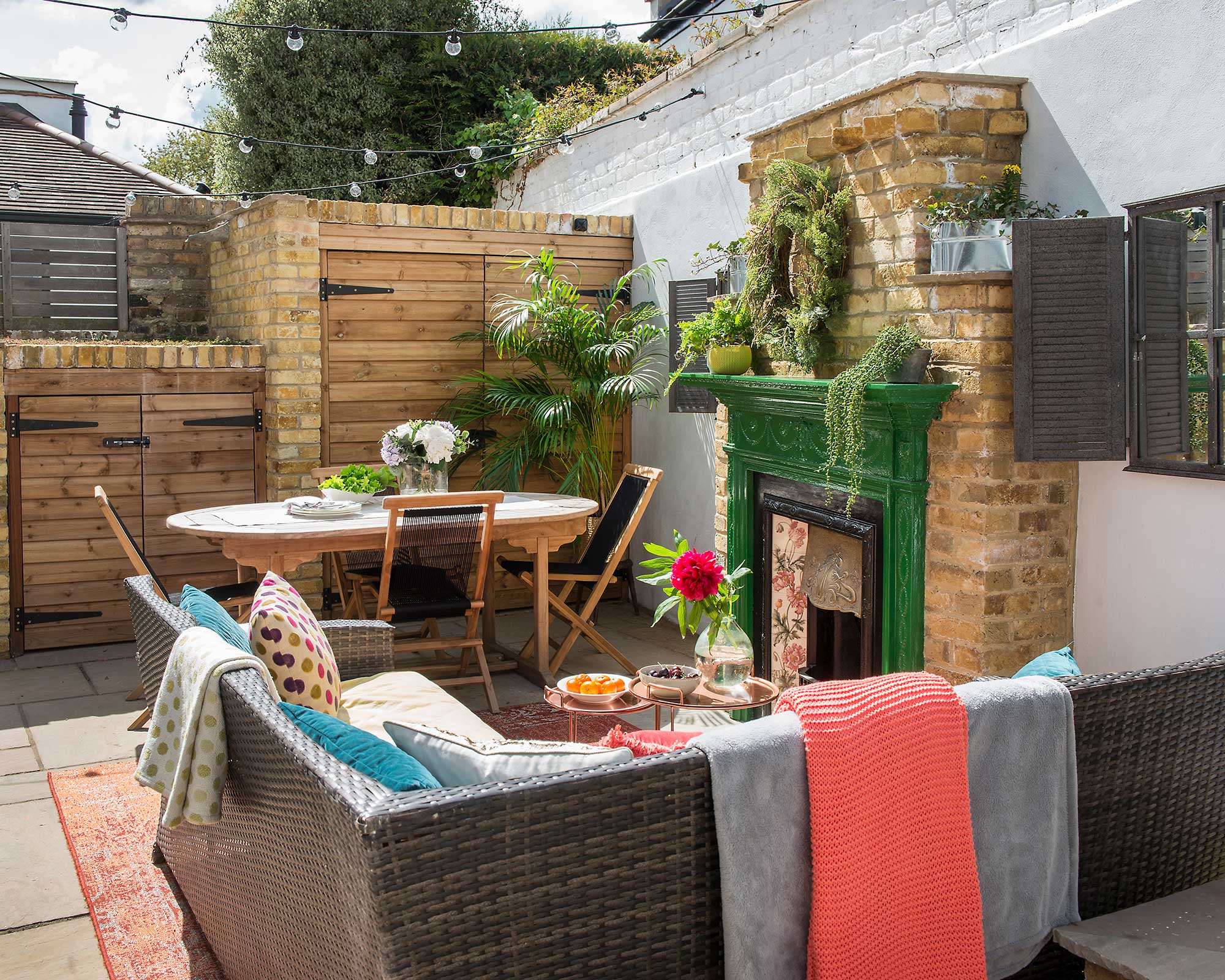
Give concrete pavers a quick update with an outdoor rug
Need to pep up concrete pavers in a courtyard quickly? Rather than installing replacements, or spending time painting them, simply invest in a couple of outdoor rugs (try Amazon for a good selection). Even the plainest of pavers can be transformed this way.
'The additional solace of not having to place your feet on a cold patio tile creates a sumptuous experience and a stylish aesthetic that will work wonders in your garden,' says the team at Harbour Lifestyle. 'Choose a rug that coordinates with your existing furniture, and ensure you select one with hardwearing, weatherproof materials for a truly indulgent feel.'
Finish the scene with a comfy outdoor sofa adorned with cushions and throws, plenty of potted plants, and twinkling festoons to light up the space when the sun sets.
11. Surround a pond with concrete pavers
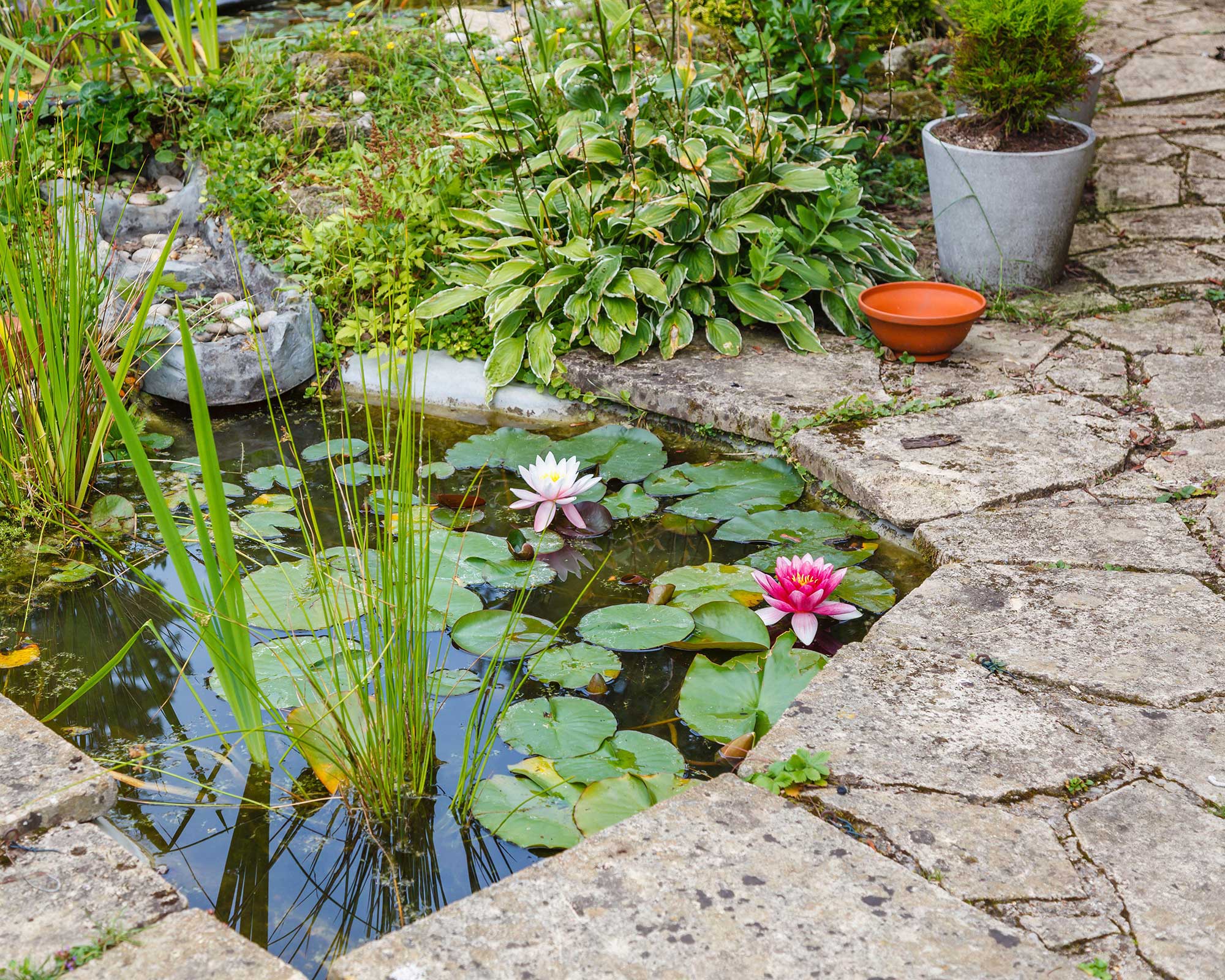
This style of paving adds a relaxed feel
Using concrete paving in an informal layout like this will give any space a relaxed and rustic look. It works well for a patio or, as seen here, around a garden pond full of pretty aquatic plants.
You could go a step further and add hardy ground cover plants in the gaps between each slab. This will add color, texture, and even scent if you choose varieties such as chamomile or thyme. Plus, it's good for wildlife, too.
12. Make a statement with bold shapes
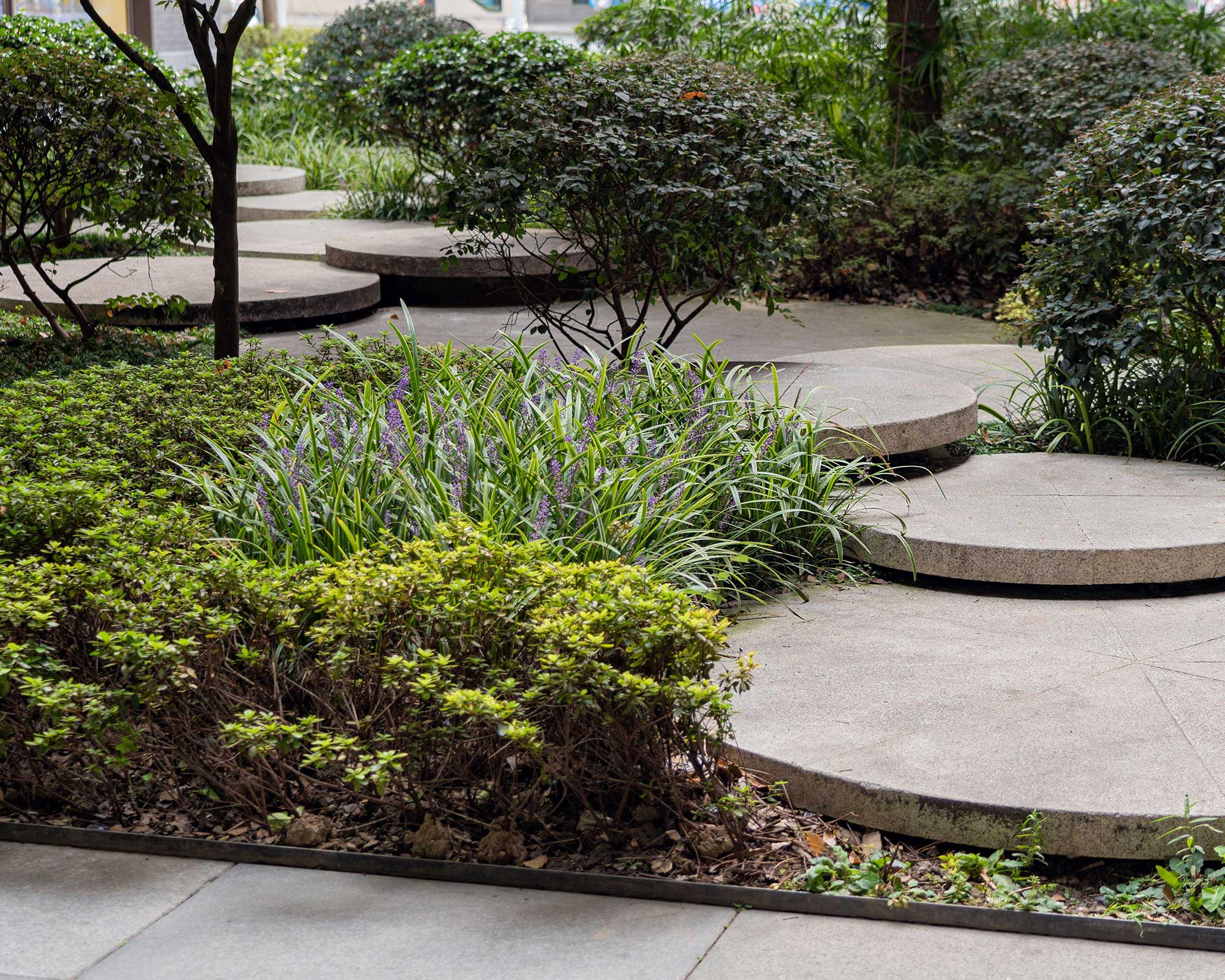
We're big fans of these large, circular slabs
If you want to create a big impact with your concrete paving ideas, then try a look like this. It's a reliable way to turn garden steps into a stylish, sculptural feature rather than simply a means to get from A to B.
We love how the circular slabs seem to float above the ground, while the nearby topiary subtly mirrors the shapes. Coupled with the use of green as the predominant color for the planting scheme, the scene looks fresh and fuss-free – perfect for setting a calming mood.
What should you put under concrete pavers?
If you're considering a concrete DIY patio or path, then these tips from Lee Dunderdale, Product Manager at Bradstone, will come in handy.
'You need to allow 100mm [3.9in] for a foundation and 30mm [1.2in] for a mortar bed to go under your concrete pavers, and then also ensure you dig out enough depth to factor in the thickness of your slab,' he says.
'If you are laying directly next to a house, then the finished patio should be at least 150mm [5.9in] below the damp proof course. This means you will need to dig the area to a minimum depth of around 300mm [11.8in] below the damp proof course,' he continues.
You also need to factor in garden drainage. 'To ensure that water does not collect on the paving, the foundation needs to have a fall of 1 in 60, either to suitable drainage or to a run-off area, such as the lawn, which means 1cm [0.4in] of fall for every 60cm [23.6in]. So, a 3m [9.8ft] run will need 5cm [1.96in] or 50mm of fall.' This can also be referred to as a gradient or slope.
Lee continues: 'To create the firm foundation, you need to cover the whole area with MOT Type 1 to a minimum depth of 100mm [3.9in] when fully compacted. A compactor plate is essential in order to do this properly.
'Then, lay the paving slabs on a 30mm [1.2in] thick full mortar bed, which should support the whole slab, not just the corners. Use a mortar mix of four parts sharp sand to one part cement. Mix together with just enough water to make it damp and workable, but not overly wet and runny. It is also advisable to apply a slurry primer on the back of each paver prior to laying on the mortar bed to provide greater adhesion.'
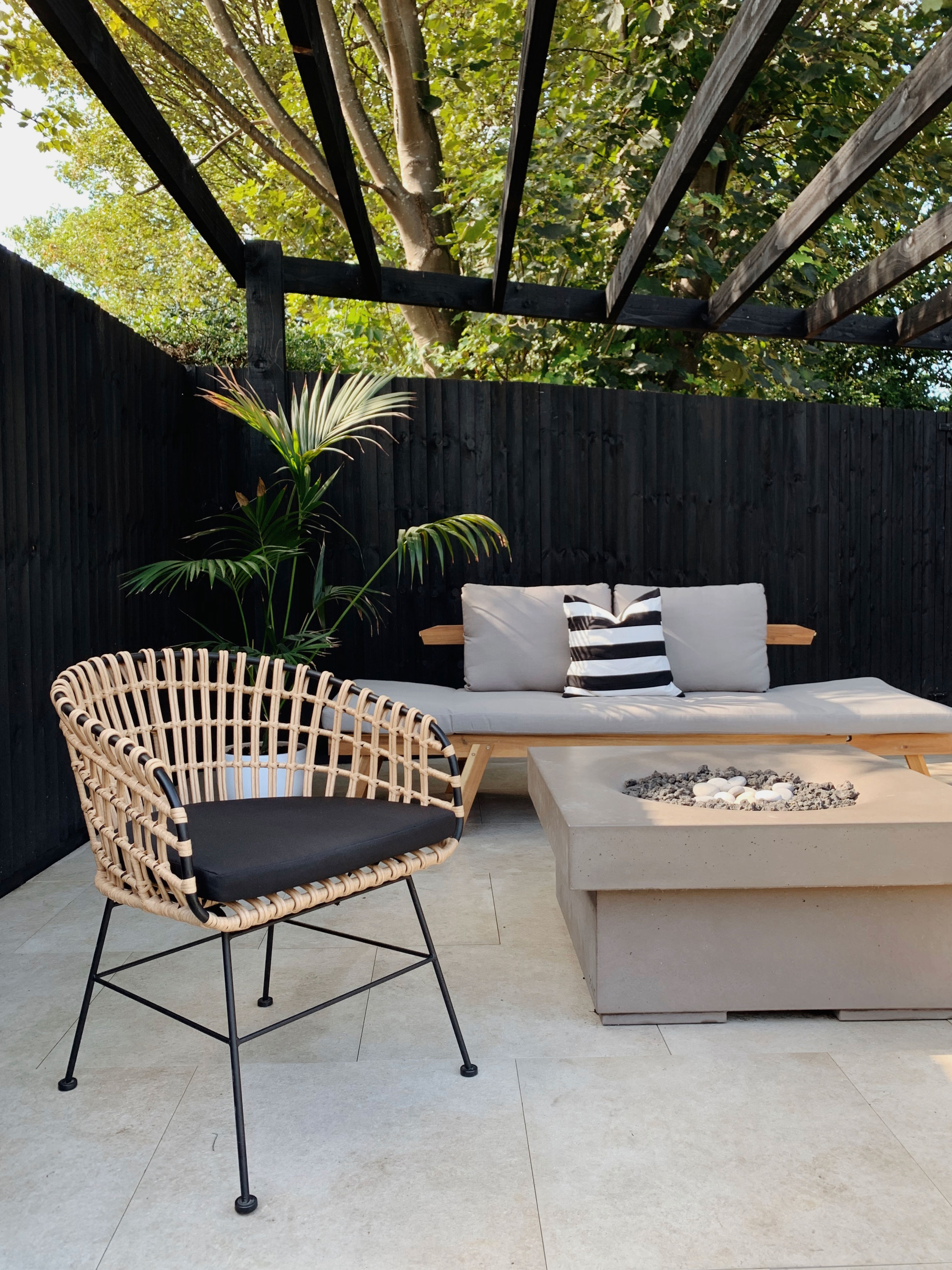
Concrete is an ideal material for this contemporary zone, styled by Solus Decor

The garden was always a big part of Holly's life growing up, as was the surrounding New Forest where she lived. Her appreciation for the great outdoors has only grown since then. She's been an allotment keeper, a professional gardener, and a botanical illustrator – plants are her passion.
